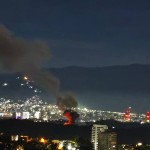The spike in production was given by a combination of increased coca cultivation in Colombia, where multiple new groups engaged in cocaine trade emerged in recent years, and improvements in converting coca leaves to powdered cocaine.
This was accompanied by a simultaneous increase in demand.
In Europe in particular, more consumers turned to cocaine as the drug became cheaper due to intensified competition between cocaine trafficking gangs and as crack, cocaine mixed with baking soda into a substance that can be smoked, gained more popularity.
West Africa, which has cemented its role as the key transit zone for cocaine to Europe, likely also faced an upsurge in cocaine consumption, registering more people seeking cocaine addiction treatment.
According to Angela Me, Chief of the UNODC Research and Analysis Branch, the speed with which cocaine consumption was picking up along some of the transit routes in Africa and Asia is threatening.
“[It] can become part of the drug use habit of [the regions] and potentially lead to millions of more people using cocaine,” she said.
Another key factor behind the cocaine market expansion was enhanced sophistication of trafficking methods.
In an attempt to minimize shipment seizures, trafficking gangs increasingly outsourced transport of the drug between specific destinations on the smuggling route to smaller criminal gangs – “service providers”.
The report also noted that the use of shipping containers expanded as traffickers came up with new creative and complex methods of camouflaging their cargo. Meanwhile, sophisticated navigation technology enabled traffickers to avoid law enforcement at seaports and make a higher use of transhipment at sea.



